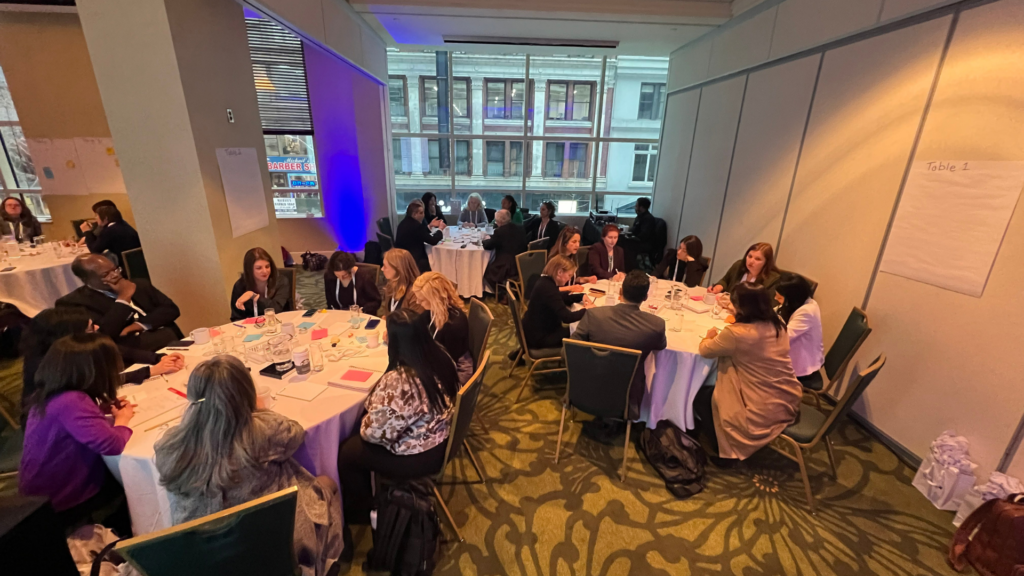
Before launching Knowledge to Power Catalysts with Karen and Merita, I had a one-woman consulting firm – KP Facilitation. After eight years working in Denver Public Schools, I decided it was time to go out on my own. I started my consulting work on the premise that as a leader I too often led from the front rather than from alongside, in part because I had only a limited pool of facilitators I trusted. I’m a huge believer of the power and knowledge of the group – that in any group we likely have the answers to the questions and challenges we seek to solve. But I am also a huge believer that to untap that power you need a skilled facilitator to spark creativity, planning, and, ultimately, achieve results.
The pandemic provided an opportunity to translate facilitation strategies to online environments. Breakout groups replaced table conversations. Jamboard, Padlet and Mosaic replaced flip charts and sticky notes. I, and other great facilitators I had the opportunity to work with, did our best to keep collaboration alive. Yet there was one key difference between in person and virtual collaboration – face to face time. Zoom fatigue is real and our ability to engage in extended conversation and collaboration became limited.
I think all of us who have joined virtual meetings, conferences, and planning sessions can attest to the fact that spending 8 hours on Zoom is very different than spending 8 hours in a room together. What would have been day long collaborations turned to half day. I find myself advocating for virtual meetings no longer than 90 minutes.
And as things started to open back up we learned that hybrid facilitation brough its own set of challenges and required totally different uses of time and interaction. Often those in the room and those engaging virtually had wildly different experiences even thought they were engaging in the same meeting.
Given all of this, it was not a great surprise last summer that when I interviewed a group of field leaders on the topic of collaboration, they shared that they spent lots of time on zoom meetings together but had little time for deep discussion and alignment. It was even less of a surprise when they said that the last thing they wanted to support collaboration was another zoom call.

Last week, I had the privilege of spending two days in person facilitating this same group of field leaders – all in the room together – as they shared about their work, ideated on ways to work together, and had time to be in community. I believe the work and time were powerful for them, but I know the time was powerful for my own learning and growth.
I was reminded how much I love in-person facilitation and also of a few things that support success. My key reminders:
- Do not do for the group what the group can do for themselves. When you find yourself surrounded by an amazing brain trust, set the frame for them and let them go. Good facilitation doesn’t necessarily mean over orchestration.
- Trust your gut. I’ve facilitated in person just two other times since the pandemic began. I felt a little rusty, but at several points I thought a key pivot was needed. Initially I questioned myself, but instincts led me back to the pivot that was needed.
- Find trusted thought partners. I was very lucky in this facilitation to be working with a design team leading up to and during the convening. When I was questioning where to go next, when I needed to be doing two things at once, or when I thought someone would just be better served to lead, I had people who could reflect, adjust, and co-create in real time.
- And perhaps most importantly for the return to the “real world”…wear flats not heels!
These lessons echo what we’ve heard from teachers and youth workers – when it comes to thinking, relatingcreating, being face to face in real life is the way to go.




No comment yet, add your voice below!